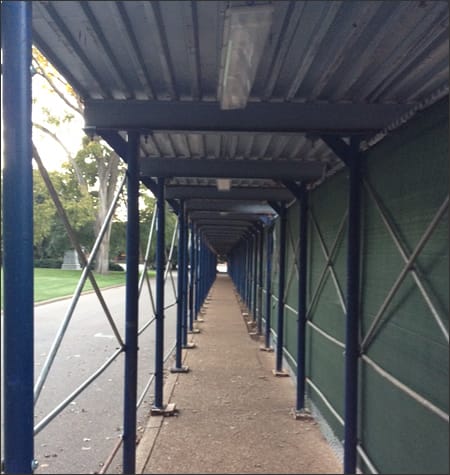KootK
Structural
- Oct 16, 2001
- 18,563
I've been looking at the design of some of these overhead protection systems that get installed above pedestrian sidewalks. You know, to ensure that anvils aren't falling into baby carriages when work is being performed on the building exterior. Does anybody know of any standards or guidance that might be available with respect to the applicable loads for these systems?
It may be that I'm just not using the right search terms but I've run up against a surprising paucity of design guidance on this. I've got a friend that designs these things regularly and he swears that, in our jurisdiction, there is no loading requirement other than to understand the nature of the construction activities and to design accordingly for impact. On the other hand, I keep seeing 50 PSF crop up in the work of others.
My practice location is Alberta Canada. That said, I would be interested in design guidance originating from any geographical location that may have it.

It may be that I'm just not using the right search terms but I've run up against a surprising paucity of design guidance on this. I've got a friend that designs these things regularly and he swears that, in our jurisdiction, there is no loading requirement other than to understand the nature of the construction activities and to design accordingly for impact. On the other hand, I keep seeing 50 PSF crop up in the work of others.
My practice location is Alberta Canada. That said, I would be interested in design guidance originating from any geographical location that may have it.

